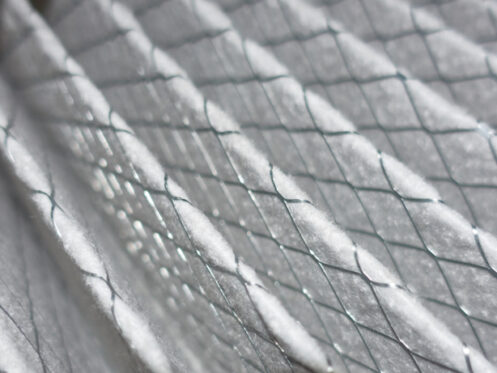When it comes to the conversation on indoor air quality (IAQ), there’s often confusion about air filters vs. air purifiers. This guide will explain everything homeowners need to know about these similar but distinct IAQ components, including their differences, similarities, and benefits. We’ll also discuss maintenance and cost considerations, ideal situations for each, and how to install them in the Denver, CO area. Let’s take a look!
Air Filter
An air filter is a device fitted into your home’s existing HVAC system, such as a furnace, air conditioner, or heat pump. It improves indoor air quality by removing common contaminants that would otherwise enter your home from outside, including dust, dust mites, pollen, and mold spores. It can also cut down on the circulation of indoor contaminants, such as tiny carpet fibres, pet dander, and lint.
Besides being beneficial for respiratory health, air filters protect the components of your HVAC system by preventing debris and contaminants from entering. This helps prevent damage and buildup in your HVAC unit, boosting efficiency and extending its lifespan.
Air filters are designed to trap and hold everything they filter, so they must be replaced periodically. Typically, home HVAC air filters need to be replaced every 30 to 90 days.
Air Purifier
An air purifier is a device specifically used to remove (or neutralize) harmful contaminants that can’t be reduced with standard air filters. There are three main kinds of air purifiers.
UV air purifiers
Ultraviolet light air purifiers use a powerful UV-C light to neutralize harmful contaminants entering your HVAC air handler. It can effectively limit mold spores, bacteria, and other hazardous microbes. It’s common for these to be installed on air conditioners, as these microbes can sometimes grow on the system’s coils.
Ionic air purifiers
This type of purifier is installed near your HVAC system’s blower assembly. It uses a process known as ionization to remove contaminants such as pollen, bacteria, and even particles containing viruses from the air. The device’s ionizer sends negatively charged ions into the air, which bond with the positive ions of the airborne contaminants. Once the particle is bonded to the negative ion, it becomes too heavy to stay airborne and falls onto a platter where it is eventually cleaned away.
Hybrid air purifiers
UV/catalyst ion hybrid air purifiers are a combination of the other two kinds of purifiers, typically installed in the supply side of your HVAC ductwork. They use both UV light and an ionic catalyst to remove a wider range of particles from the air, offering the best of both worlds when it comes to indoor air quality and purification.
Key Differences Between Air Filters and Air Purifiers
So what exactly is the difference between air filters and air purifiers? In short, air filters remove larger particles from the air and protect your HVAC system from debris buildup and efficiency issues. Air purifiers, on the other hand, are used to remove smaller particles, such as allergens, smoke, bacteria, viruses, mold, and more.
Air filters are quite simple and can usually be easily replaced without much prior knowledge. Air purifiers, on the other hand, are sophisticated devices that typically use multiple purification methods to clean the air, making them more difficult to work on.
Choosing the Right Option for Your Needs
All HVAC systems have an air filter built into their design, while air purifiers are usually an additional device that homeowners can add to their system, especially if they have severe allergies or other respiratory conditions. This means there’s no reason to choose one over the other — in fact, many people use both to get the maximum indoor air quality.
If you typically aren’t bothered by allergies, respiratory issues, or irritation from pollution when inside, then your air filter is probably sufficient. Otherwise, an air cleaner or air purifier might be worth the investment.
Maintenance and Cost Considerations
Air filters replacement should happen about every 1 to 3 months in order to prevent contaminants from entering your air supply and HVAC system. Their cost depends on their filtration rating and size but they generally only cost $10 to $40 each.
Air purifiers are far more complex and will cost more to install and maintain. Air purifiers often have air filters in them, which must be changed every 3 to 12 months, depending on the type. Pre-filters must also be regularly cleaned every 1 to 3 months for optimal purification. The system also needs to be thoroughly cleaned and maintained annually to ensure it works properly.
Benefits of Air Filters and Air Purifiers
Air filters and purifiers are both beneficial for indoor air quality and respiratory health. They are also necessary components of your HVAC system, helping to extend its lifespan and improve energy efficiency. Air purifiers offer more comprehensive removal of harmful contaminants, providing superior indoor air quality.
Breathe Easy with High 5 HVAC Services
Air filtration and purification are essential for your health and comfort. Many homeowners opt to add an air purifier to their system, allowing them to get the energy-efficiency benefits of an air filter while getting the full-spectrum protection of an air purifier. If you’re curious about how these systems can help you save money and stay healthy, High 5 is here to help. Contact us to schedule an HVAC appointment today!

